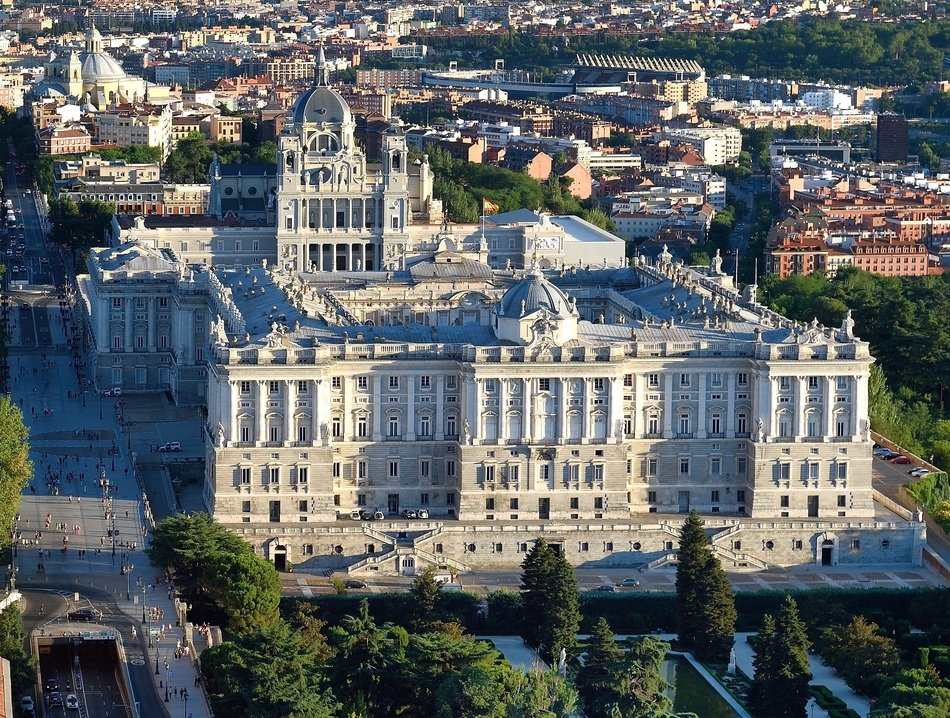The Royal Palace of Madrid, also known as the Palacio Real, is one of Europe's most iconic and breathtaking palaces. Located in the heart of Madrid, this stunning palace has been the official residence of the Spanish royal family since the 16th century. Today, it serves as a popular tourist attraction, welcoming millions of visitors from around the world each year.
Royal Palace Of Madrid Facts it is also know as Palacio Real de Madrid, is a historic building that has been the official residence of the Spanish Royal Family for centuries. It is one of the most popular tourist destinations in Madrid, attracting millions of visitors every year. The palace has an impressive collection of art and antiques, including paintings by renowned artists like Goya and Velázquez, as well as furniture, sculptures, and other decorative objects. The palace is also home to the Royal Armoury, which houses one of the largest collections of arms and armor in the world. Despite its size and grandeur, the palace is still used for official ceremonies and events, making it an important symbol of Spanish monarchy and culture.
Inside the Royal Palace of Madrid, visitors can marvel at the palace's stunning architecture and opulent interiors. The palace has over 3,400 rooms, each one lavishly decorated with beautiful artwork, luxurious furnishings, and ornate ceilings. The palace's most impressive rooms include the Throne Room, with its intricate gold-plated decorations, and the Royal Chapel, which is decorated with frescoes and sculptures by some of the most famous artists of the time. Visitors can also explore the palace's many galleries and museums, which house an impressive collection of art and artifacts from throughout Spain's history. Whether you're interested in art, history, or simply want to experience the grandeur of Spanish royalty, a visit to the Royal Palace of Madrid is not to be missed.
History of the Royal Palace of Madrid
The construction of the Royal Palace of Madrid began in 1738 under the orders of King Philip V. It was designed by Italian architect Filippo Juvarra, who unfortunately passed away before the palace was completed. His work was continued by Spanish architect Francesco Sabatini, who completed the palace in 1764.
Throughout history, the Royal Palace of Madrid has played an important role in Spanish politics and culture. It has been the site of many important events, such as the signing of the Treaty of Madrid in 1750 and the proclamation of the Second Spanish Republic in 1931.
Architecture and Design
The Royal Palace of Madrid is a magnificent example of Baroque architecture, with a touch of neoclassicism. The palace has a symmetrical layout, with four towers at each corner and a central courtyard. It boasts more than 3,000 rooms, making it the largest royal palace in Europe by floor area.
Visitors to the palace can admire its stunning interiors, which are adorned with priceless works of art and luxurious furnishings. Highlights include the Throne Room, which is decorated with gold leaf and features a ceiling painted by Tiepolo, and the Royal Armoury, which houses an impressive collection of weapons and armour.
The Palace Gardens
In addition to the palace itself, visitors can also explore the palace gardens, which cover an area of 140,000 square meters. The gardens are divided into several sections, each with its own unique features and attractions.
The Sabatini Gardens are located on the northern side of the palace and were designed by Francesco Sabatini in the 18th century. They feature symmetrical hedges, fountains, and statues, and offer stunning views of the palace and the city.
The Campo del Moro Gardens are located on the western side of the palace and were originally designed in the 19th century. They feature a mix of styles, with a romantic English garden, a French-style rose garden, and a formal Spanish garden.
Visiting the Royal Palace of Madrid
The Royal Palace of Madrid is open to visitors year-round, except on certain holidays and special occasions. Visitors can purchase tickets online or in person at the palace ticket office.
Guided tours are available in several languages and offer a comprehensive look at the palace's history, architecture, and art collections. Audio guides are also available for those who prefer to explore the palace at their own pace.
Visitors should plan to spend several hours exploring the palace and its gardens. Comfortable shoes are recommended, as the palace grounds cover a large area and involve a fair amount of walking.
Conclusion
The Royal Palace of Madrid is a must-visit destination for anyone traveling to Spain. With its rich history, stunning architecture, and beautiful gardens, it is truly one of Europe's most magnificent palaces.
Whether you are interested in art, architecture, history, or simply want to experience the grandeur of a royal palace, the Royal Palace of Madrid is sure to impress. So why not add it to your travel itinerary and experience the beauty and majesty of this iconic landmark for yourself?

















